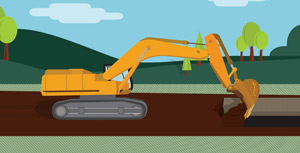Preventative maintenance digs
ENGLISH | FRANÇAIS
Enbridge operates the largest and most complex liquids pipeline system in the world, and we’ve transported 14 billion barrels of crude oil with a safe delivery record of 99.9993 per cent over the past 10 years – but that's not good enough. We’ll never stop striving for 100 per cent.
Our primary goal at Enbridge is – and will continue to be – the prevention of all spills. To ensure the fitness of our pipelines, we undertake a preventative maintenance dig when our ongoing monitoring and inspection program alerts us to pipeline features that may require a closer look. Sometimes we find that no repair is needed, but each of these preventative maintenance digs adds to our overall knowledge about the line's condition.
What's a preventative maintenance dig?
Enbridge’s regular monitoring and inspection program alerts us to pipeline features that may require a visual inspection to determine if a repair or other action is required. Features that have been known to require a repair in the past include third-party excavation damage, corrosion (a chemical reaction between the environment and the pipeline steel that reduces the pipe wall thickness), and cracking or denting. A preventative maintenance dig is the method we use to make the visual inspection. Each dig involves excavating a section of buried pipe such that we can carefully clean and examine it. If we find a defect, we repair it, recoat and re-bury the pipe. In some cases, we cut out old sections of pipe so we can weld in new pipe. A preventative maintenance dig can take from two days to two weeks, depending on the nature of the feature and the results of the visual inspection.
We conduct all preventative maintenance digs to the highest environmental standards and, following our own advice to the public, dig safely – calling ahead so that other underground utilities can be marked and protected before one of our backhoes begins digging. We also train workers, welders and inspectors, and ensure that our contractors who are working near the pipeline are qualified.
What steps are involved in a preventative maintenance dig?
Step 1: Location of the dig site and stripping of topsoil where applicable
Using temporary markers, Enbridge will stake out the access route and location of the excavation on the right-of-way. Typically, the area of the excavation is then stripped of topsoil, which is stored separately from the subsoil.
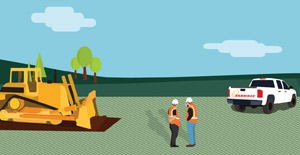
Step 2: Excavation to expose the pipe
Using machinery such as a backhoe, the subsoil surrounding the pipeline is carefully removed and stored.
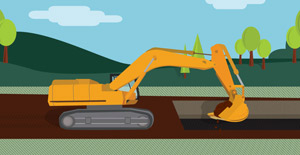
Step 3: Cleaning the exposed pipe
To ensure the area of the pipeline where our inspection has detected a feature is ready for a detailed visual inspection, a crew of workers cleans the pipe.
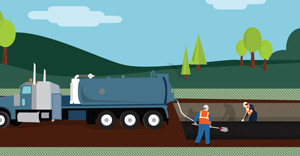
Step 4: Inspection of the pipe
After the pipeline is excavated and cleaned, the pipe coating is removed so the pipeline can be inspected.
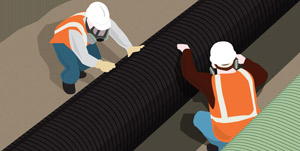
Step 5: Maintenance or repair of the pipe segment, as necessary
In some cases, the pipe is cleaned and coating repaired so early signs of corrosion are stopped. In other cases, the pipe section will be replaced or a permanent repair is done by installing a sleeve over the identified portion of the pipe to restore its integrity. Once this is complete, welds are tested and the section is inspected to ensure repairs meet standards.
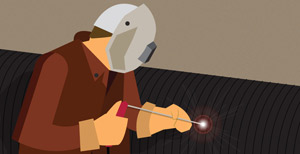
Step 6: Re-coat the pipe
Once the pipeline is repaired, and such repairs satisfy industry and government standards, the pipe’s coating is replaced.

Step 7: Backfill excavation and cleanup
Upon completing the pipe’s re-coating, the excavation is backfilled. Marking stakes are removed and the affected landscape is restored. Depending on the time of year when the work is completed, restoration may have to be delayed until the next spring season. The site will be monitored.
